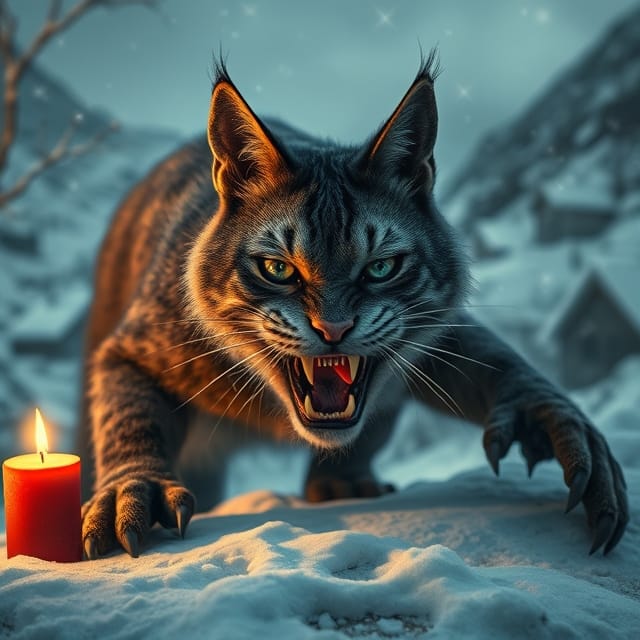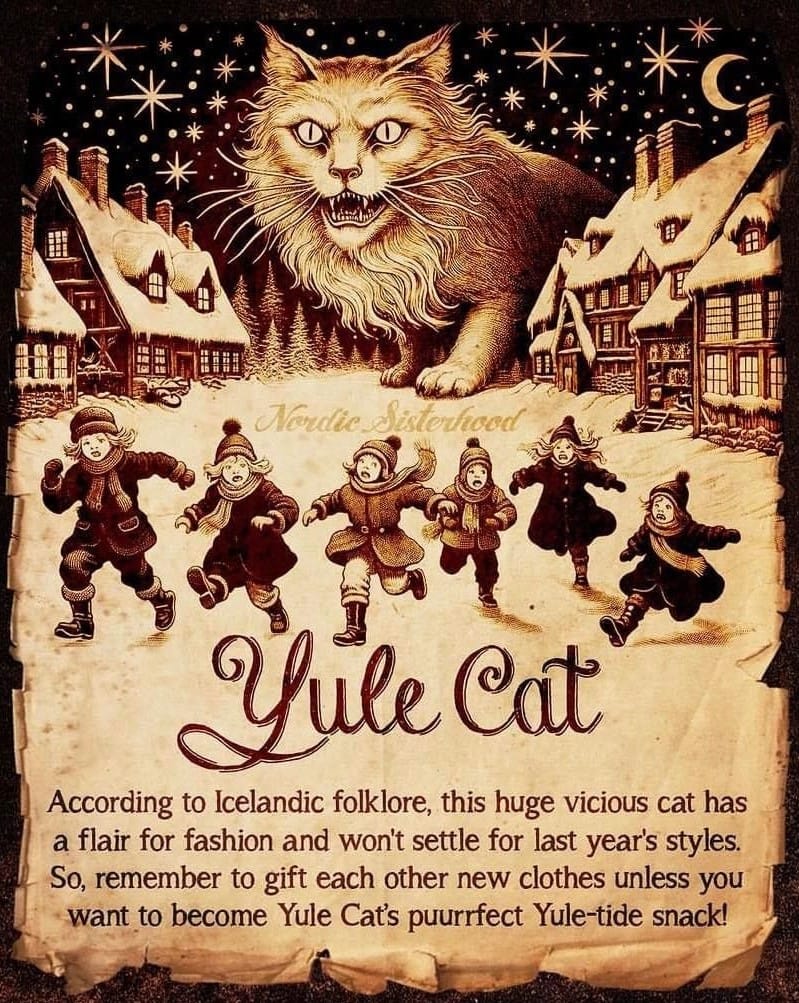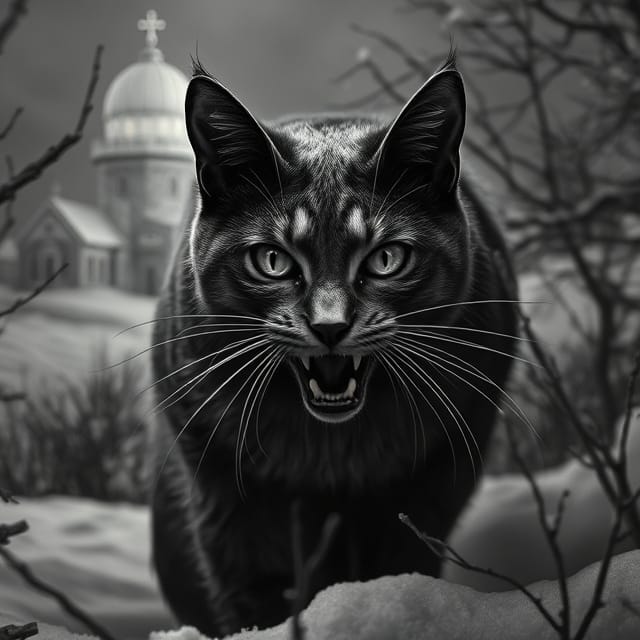The Origins of the Yule Cat: A Tale from Iceland
The Yule Cat, or Jólakötturinn, is a fascinating and fearsome creature rooted in Icelandic folklore. This enormous feline is said to prowl the snowy landscapes during the Christmas season, seeking out and eat those who have not received new clothing as a gift by Christmas Eve. Unlike the playful house cats many of us know, the Yule Cat embodies an ominous warning: diligence and generosity are rewarded, while laziness and selfishness may lead to dire consequences.

The origins of the Yule Cat myth can be traced back to Iceland’s agrarian past. During the long, dark winters, weaving and textile production were essential tasks for families. It was customary for workers to receive new clothes or wool as a reward for their efforts. This tradition served a dual purpose: to incentivize hard work and to ensure that everyone was prepared for the harsh winter months. The story of the Yule Cat was likely a tool used by parents and employers to motivate productivity and to promote the importance of sharing resources with those in need.
The Yule Cat is closely linked to Grýla and the Yule Lads, another group of legendary figures from Icelandic Christmas lore. Grýla, a fearsome troll, is said to be the Yule Cat’s owner. She and her mischievous offspring, the Yule Lads, roam the countryside during the holiday season, adding an additional layer of intrigue and terror to the festive period.

The Modern Resurgence of the Yule Cat Myth
In contemporary times, the Yule Cat has transcended its traditional Icelandic roots to become a broader symbol in global Christmas folklore. The story resonates with modern audiences for its themes of generosity, community, and the value of hard work. In Iceland, the Yule Cat remains a beloved part of holiday traditions, often featured in songs, literature, and even marketing campaigns during the Christmas season.
The tale’s moral lessons also find relevance worldwide. While the Yule Cat’s menacing demeanor might be toned down in modern retellings, its message endures: the holidays are a time for kindness, diligence, and sharing blessings with others. The myth serves as a reminder that the spirit of Christmas extends beyond material gifts to encompass the acts of giving and gratitude.

Today, the Yule Cat enjoys a renewed popularity, partly due to the global interest in Icelandic culture and mythology. It has inspired creative works ranging from children’s books to eerie depictions in visual art, capturing the imagination of audiences far and wide. As the Yule Cat prowls into contemporary holiday celebrations, it bridges the past and present, ensuring that its timeless lessons endure in Christmas traditions around the globe.
